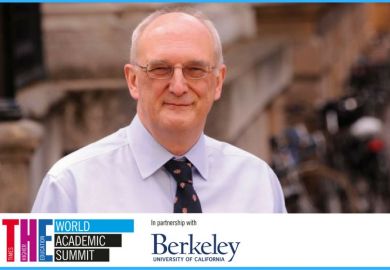Pre-register for the THE World Academic Summit 2017 at King's College London
Rich private universities in the US should consider doubling their enrolment of low-income students so that “exceptional opportunities” are available to a wider pool of young people, according to the president of the Association of American Universities.
Mary Sue Coleman made the comments in response to questions from delegates at the Times Higher Education World Academic Summit on 27 September after her keynote speech on the value of the public university.
When asked whether she had any advice for Marc Tessier-Lavigne, who has just taken over as the new president of Stanford University, Professor Coleman said: “Would Stanford ever consider doubling its enrolment? Would it ever consider making this exceptional opportunity available to more students? Would it ever consider doubling the number of Pell Grant students [those getting aid from the government]? Those are important questions the institution has to decide.”
She said that Stanford was “probably one of the most successful universities in the world” at raising private funding through philanthropy, and its mix of world-leading research and undergraduate education has been key to its “magic”.
“But I do think there are some big things Stanford could do,” she said. “Perhaps many well-resourced private universities should consider expanding their enrolment.”
During her speech, Professor Coleman, who was president of the University of Michigan between 2002 and 2014, drew parallels between the state of US higher education and laws brought in to save certain species from extinction, stating that she was “deeply concerned about the plight of public universities”.
She said the US Endangered Species Act of 1973 saved “hundreds of creatures” and she is “cautiously optimistic” that policymakers will also protect public universities.
“We are, I believe, at a tipping point. The question is which way public higher education will fall and who will do the pushing,” she said. “There is no turning back from extinction.”
However, she told the summit – being held at the University of California, Berkeley – that in the past year legislators and 38 American states have increased higher education funding per student.
“These are baby steps – the increase amounts to less than 3 per cent – but baby steps in the right direction,” she continued. “At the same time only four states have returned to funding levels above those in 2008.”
She added: “If our stock markets plummeted like this our nation would be in a dead panic. And yet sadly we are not.”
However, she said she did not want to simply “spout doom and gloom” and although she was “discouraged” by the state of the US higher education system she was “not defeated”.
Professor Coleman added that she was “not a proponent” of free tuition at public universities but instead prefers a “high tuition, high aid” model.
“I don’t think it’s feasible and I don’t think it’s right. Why should we subsidise education when people can afford to pay?” she said.
POSTSCRIPT:
Print headline: Private universities ‘should double’ numbers of low-income students
Register to continue
Why register?
- Registration is free and only takes a moment
- Once registered, you can read 3 articles a month
- Sign up for our newsletter
Subscribe
Or subscribe for unlimited access to:
- Unlimited access to news, views, insights & reviews
- Digital editions
- Digital access to THE’s university and college rankings analysis
Already registered or a current subscriber?







